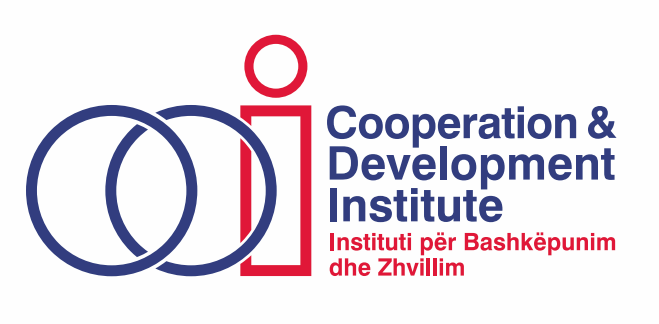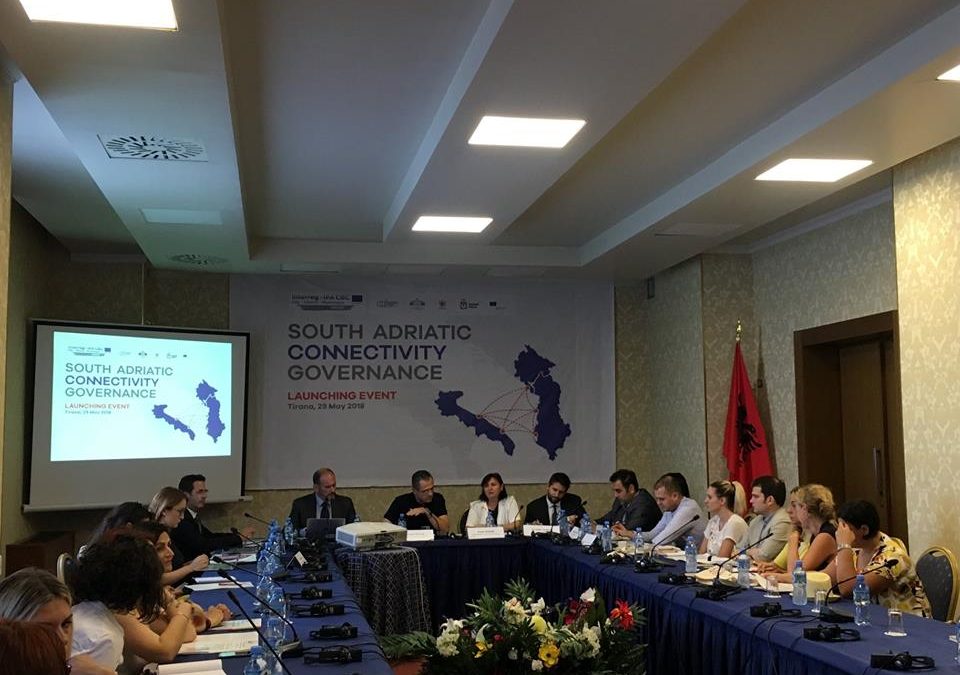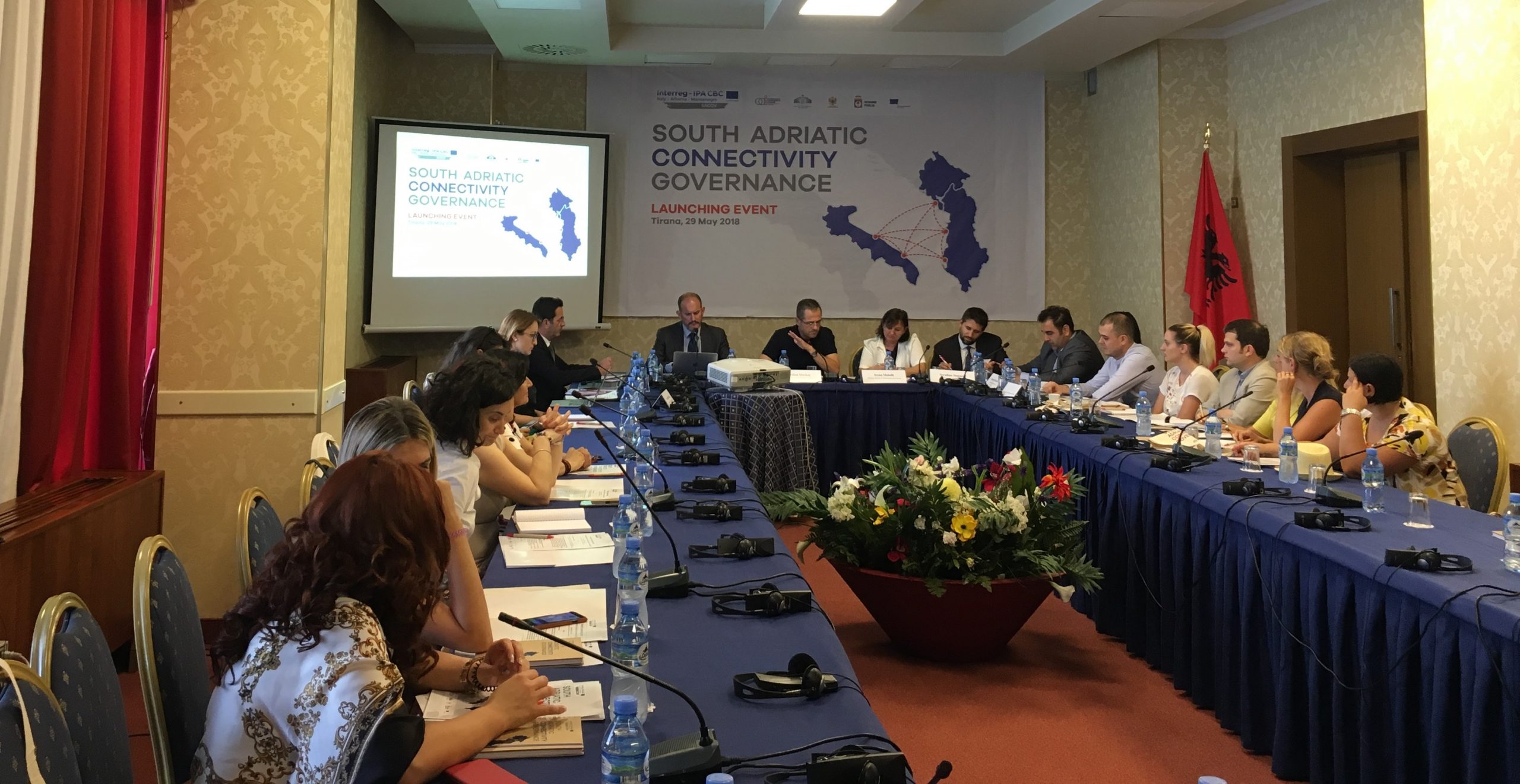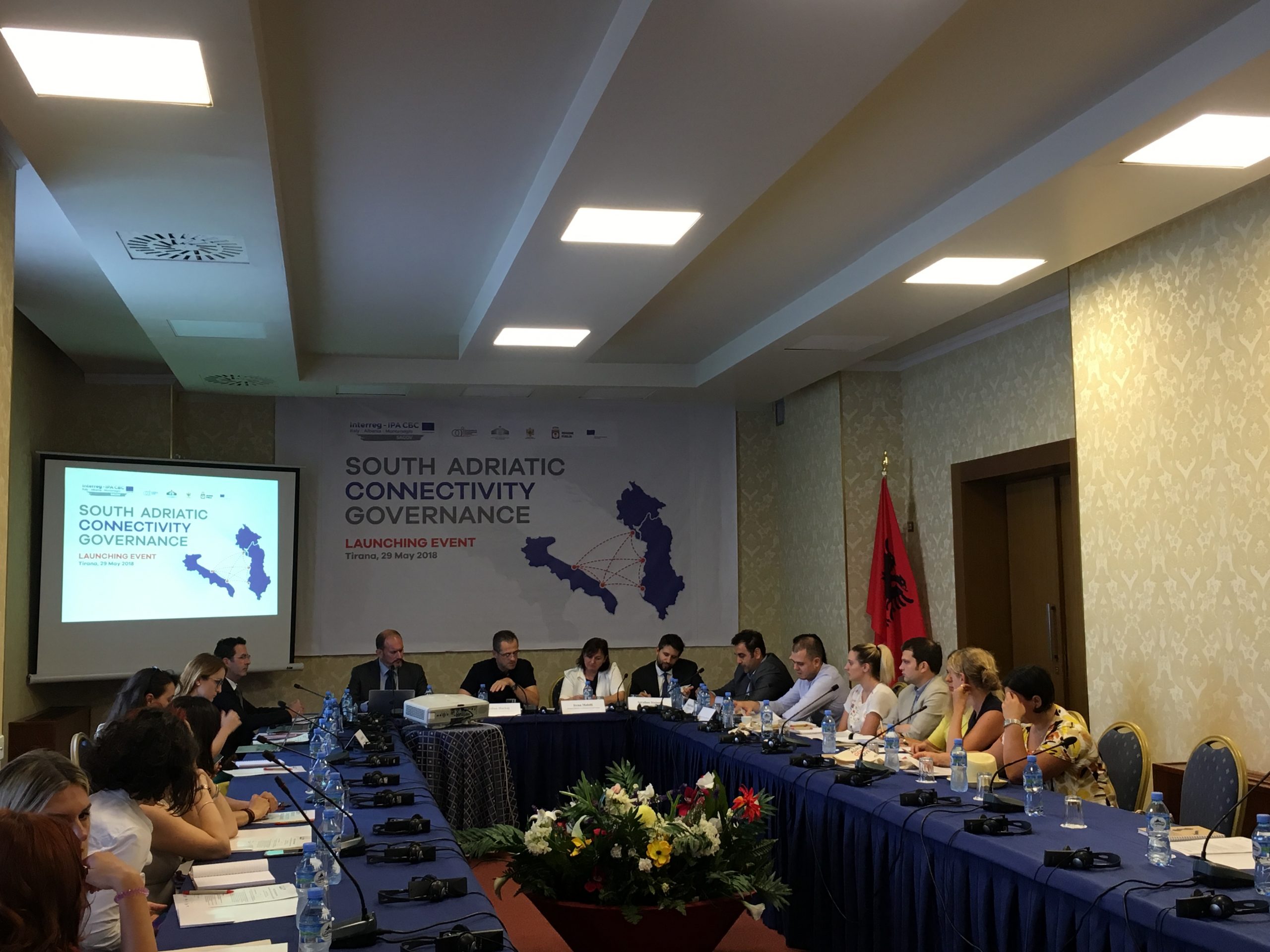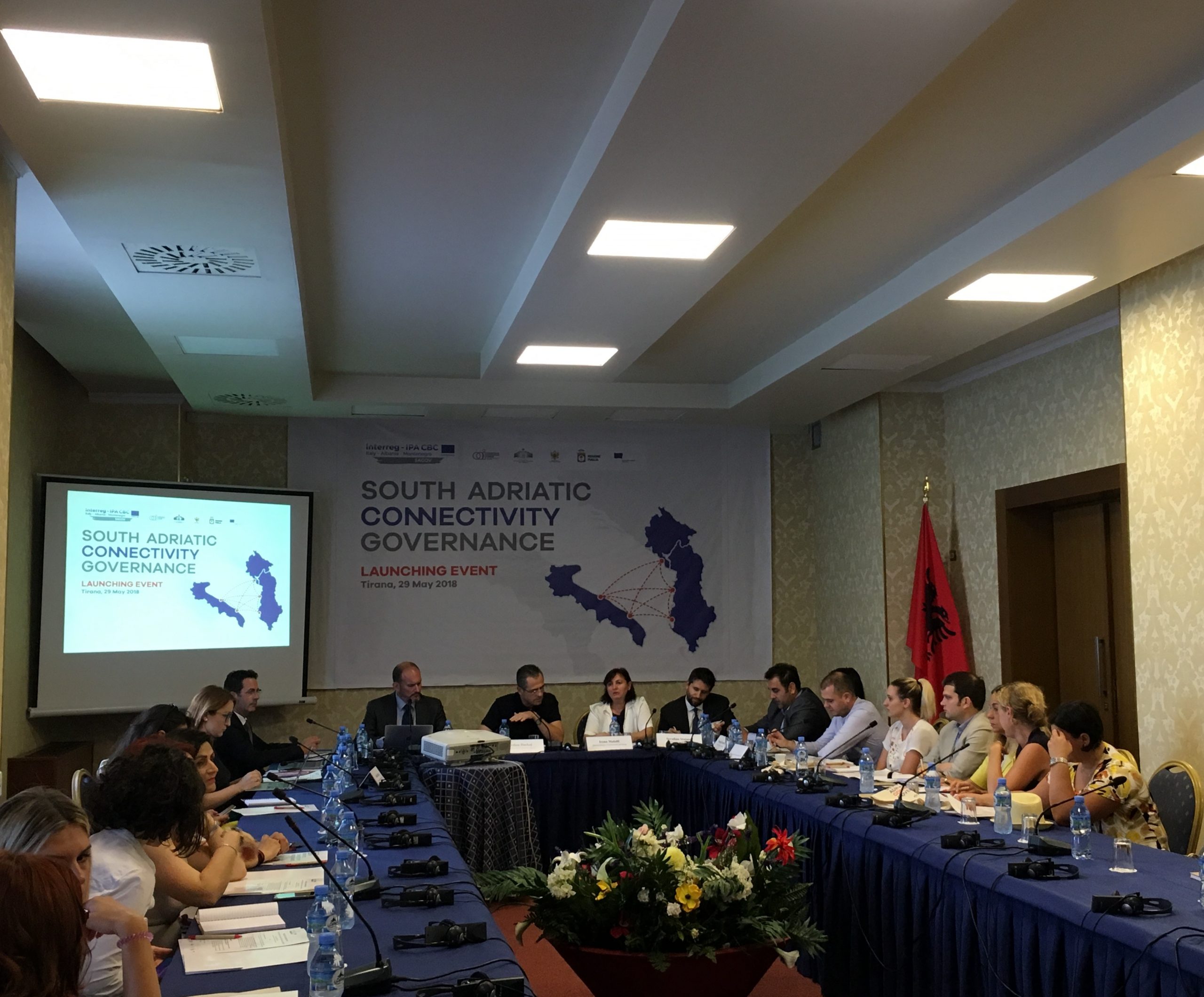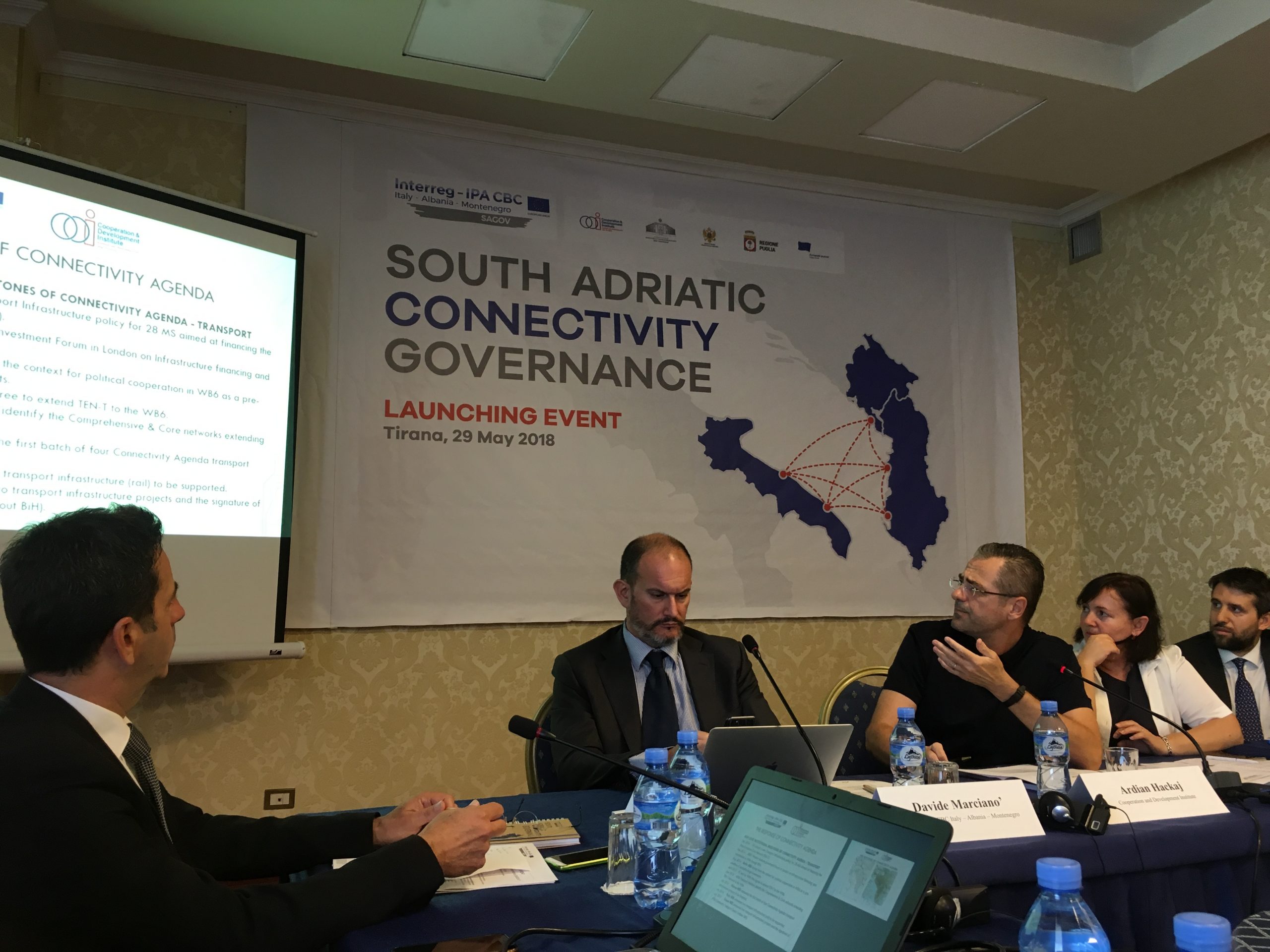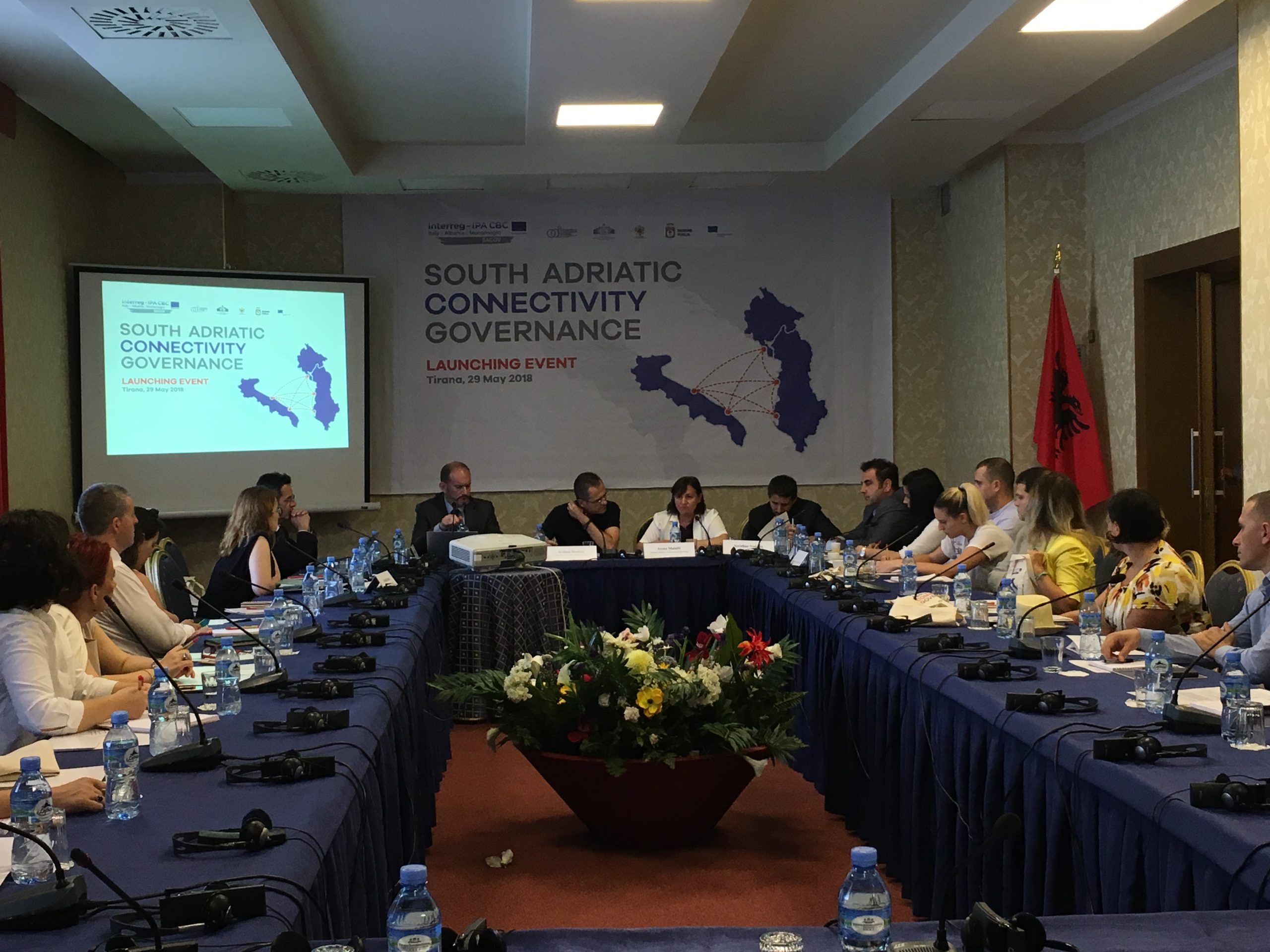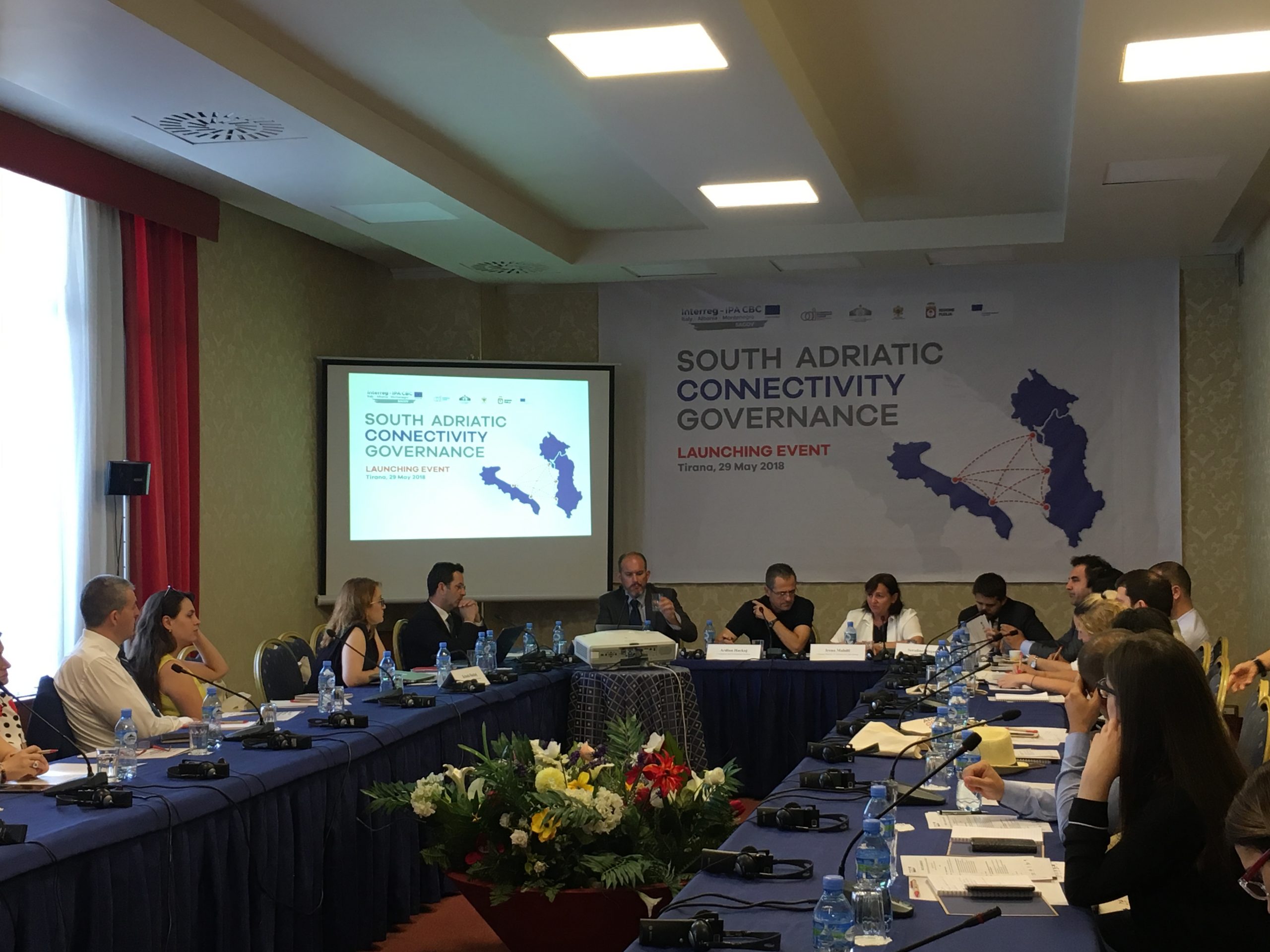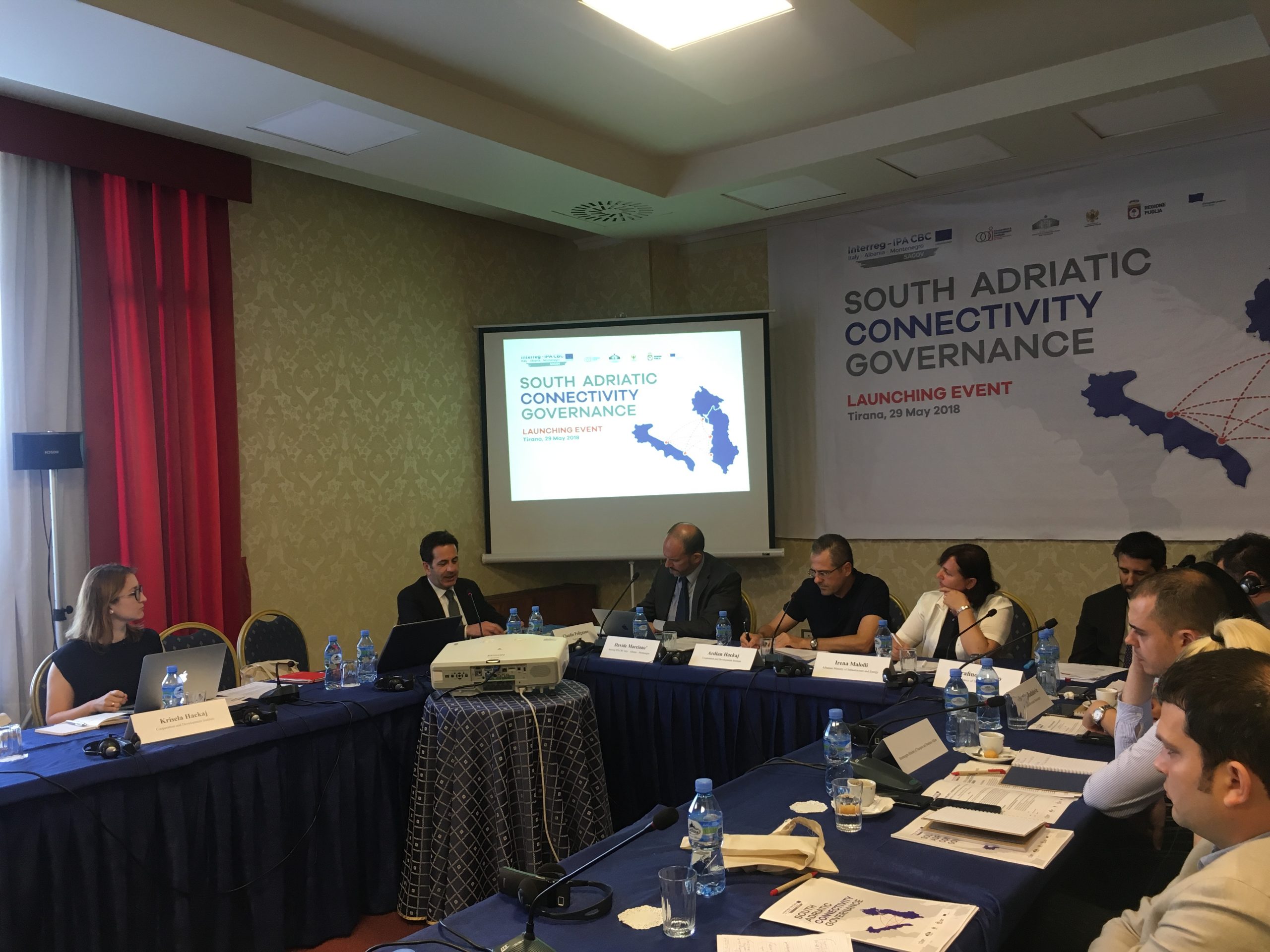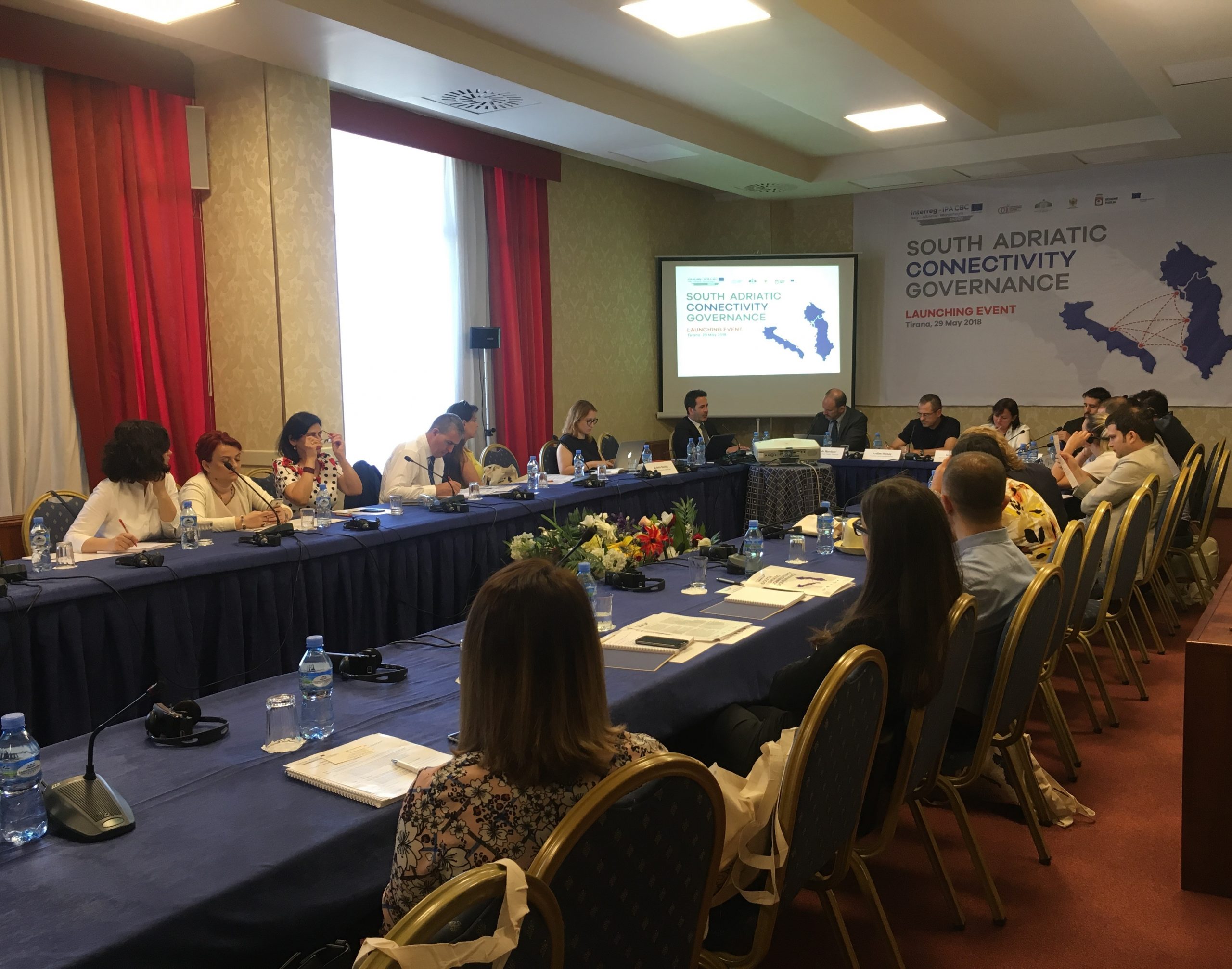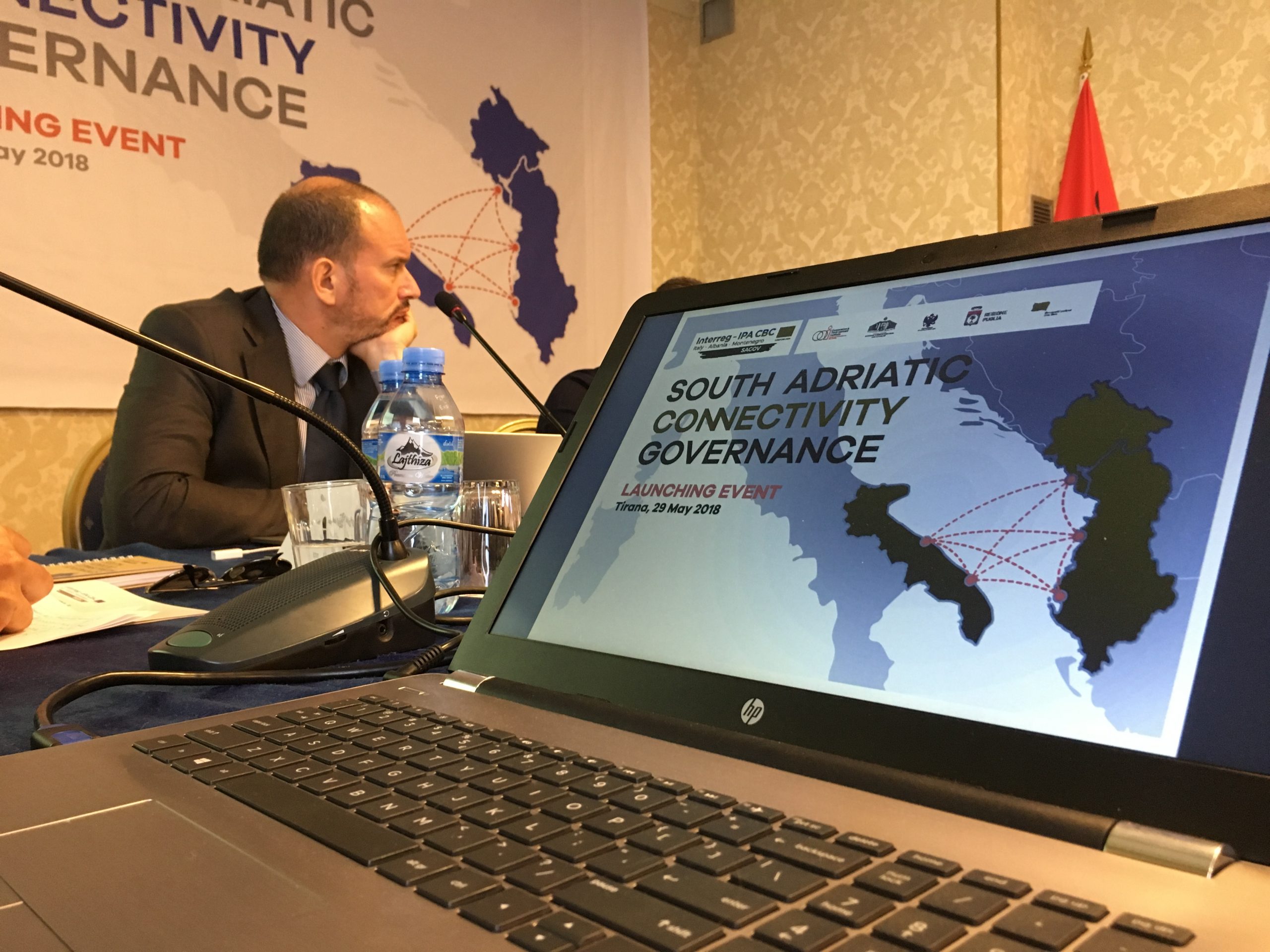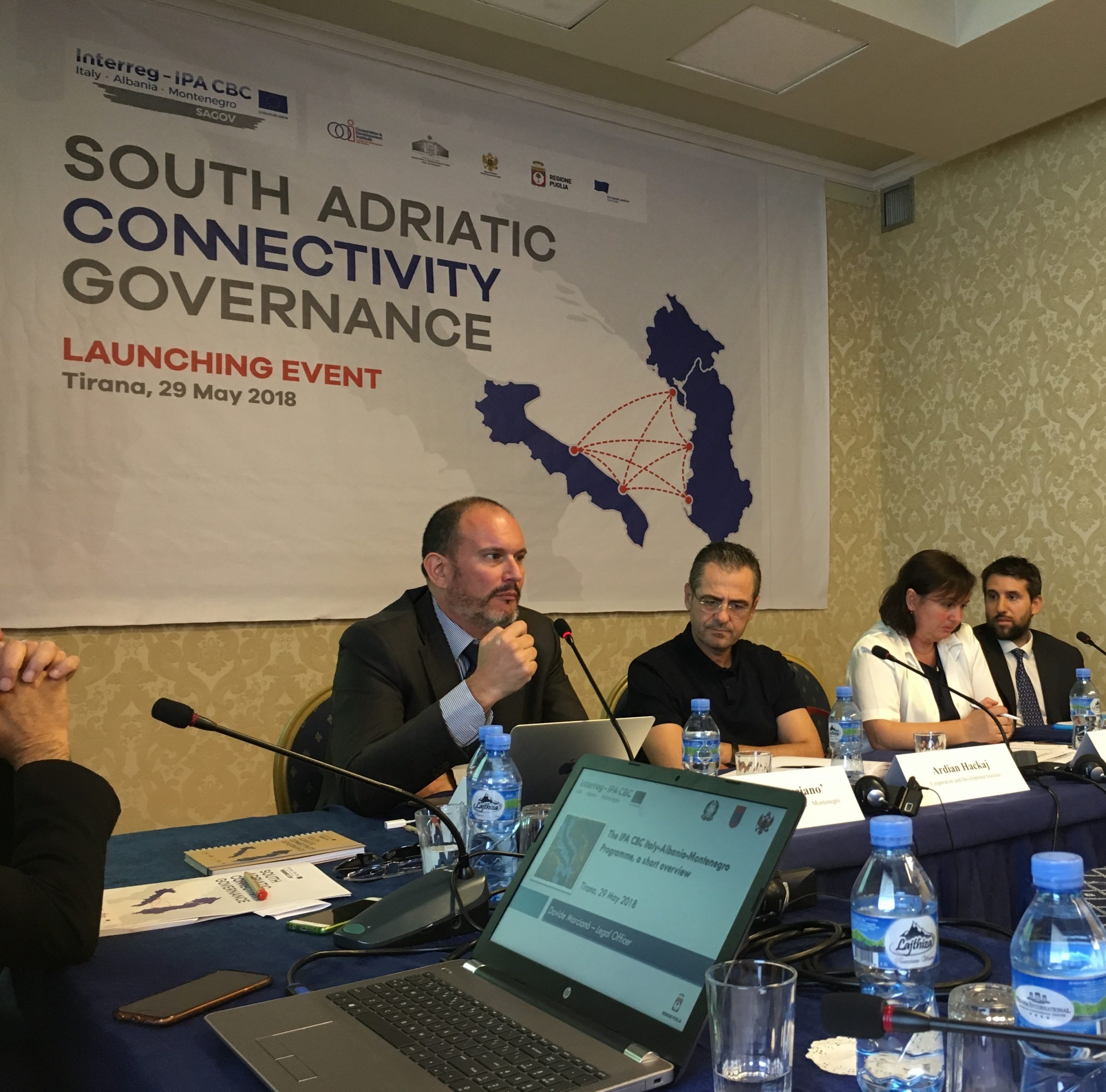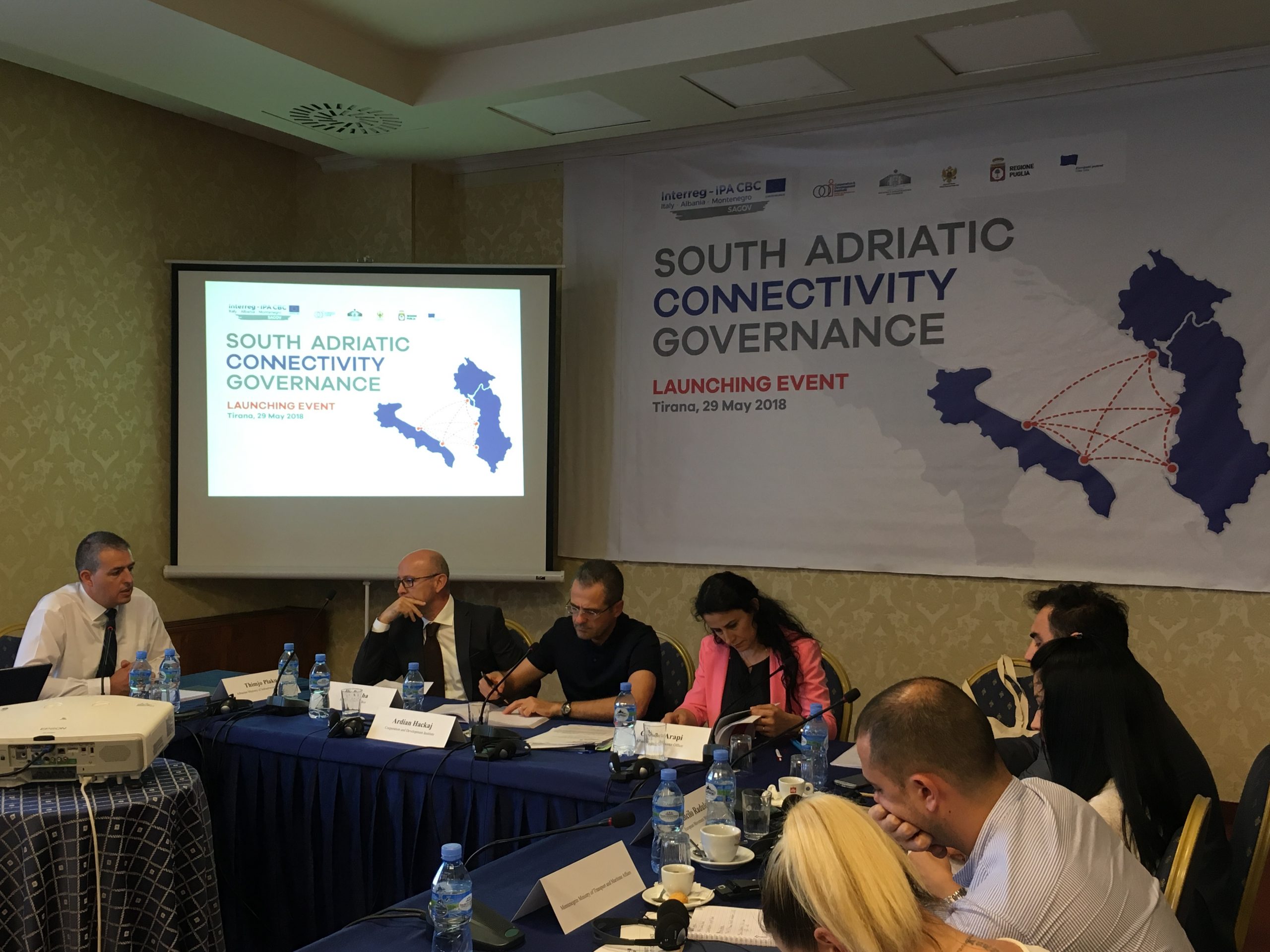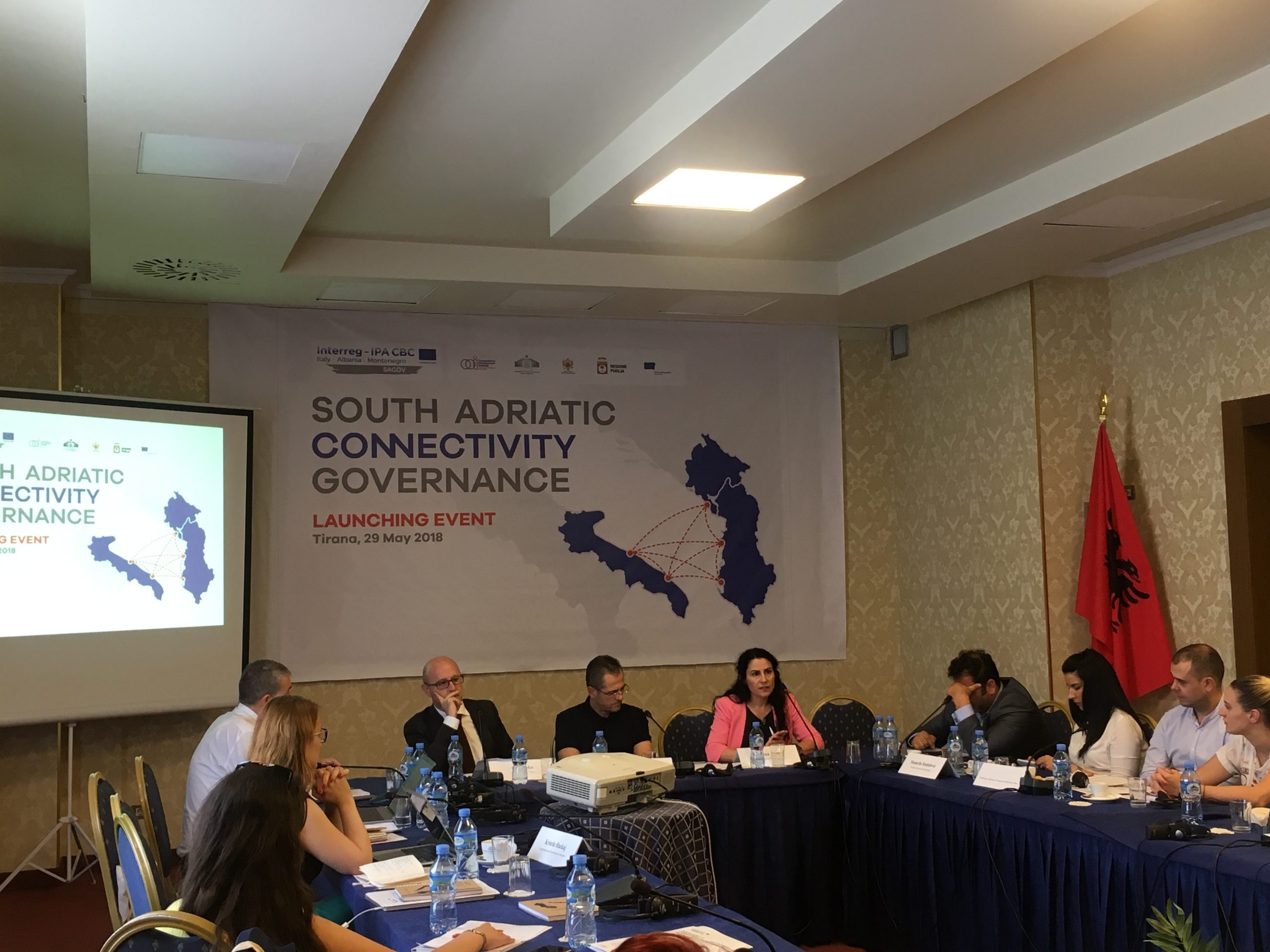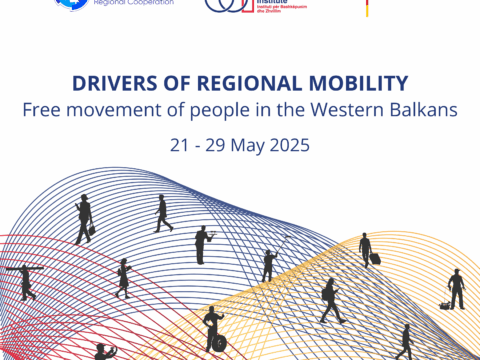SOUTH – ADRIATIC CONNECTIVITY GOVERNANCE (SAGOV) initiative officially kick-started on May 29 in Tirana. The launching event brought all the partners together with main stakeholders from Italy, Albania and Montenegro. This opportunity was used to also present the project to the public.
In his welcoming speech Mr. Ardian Hackaj, Director of Research at Cooperation and Development Institute and Project Coordinator of SAGOV, underlined the role of connectivity within the Western Balkans, and of the region with the EU partners, as a key factor for higher growth, more jobs, and more intensive trade and p2p cooperation. He provided a picture of current and planned routes connecting the WB6, as well as linking the region with the Motorways of the Sea in the Adriatic and the TEN-T corridors. In his presentation he emphasized the need for more attention towards maritime connectivity and short shipping routes between the ports of Italy, Albania and Montenegro. Mr. Ardian Hackaj underlined that historical connections and trade patterns call for a bigger emphasis in developing the connectivity in the South Adriatic Area among the three countries.
In the first panel of the launching event entitled “Regional Cooperation and Connectivity in the South Adriatic Area”, Mrs. Irena Malolli – Director of conception and feasibility of Infrastructure and Territorial Projects, at Ministry of Infrastructure and Energy in Albania – underlined the need of mapping connectivity initiatives in South Adriatic as a necessary step for better vision and efficient coordination. Mr. Serafino Stajano, representative of the Italian Embassy in Tirana, stated the interest of Italian business partners to use the Port of Durres as the gate to the Western Balkans region, drawing the attention on the need for better information as well as ex-ante coordination amongst the connectivity stakeholders. Mr. Radulovic – President of European Movement in Montenegro – also applauded the initiative of SAGOV as a good example of inclusive approach by promoting the involvement of NGO-s, think tanks, local authorities, etc. On the other side, Mr. Claudio Polignano, representative of Puglia Region, another partner of SAGOV, said that while Puglia Region, Montenegro and Albania have already been connected through EUSAIR, TEN-T and Connectivity Agenda there has been no structured communication or coordination between these initiatives, a gap that SAGOV aims to correct.
On the second panel “Challenges and opportunities of regional transport infrastructures in South Adriatic Area”, Mr. Ilir Basha from EBRD Office Tirana, gave a comprehensive picture of EBRD supported connectivity projects in Albania. Mr. Elson Thana, in charge of Maritime Transport in Albanian Ministry of Infrastrcture and Energy, explained the importance of the VTMIS – the selected pilot project that SAGOV will contribute to bring to maturation – for the maritime connectivity. Mr. Aleksandar Simonovic from Montenegrin Ministry of Transport and Maritime Affairs, explained the progress of Montenegro in implementing the first phase of VTMIS and its commitment to work closely with Albanian and Italian colleagues on the maturation process for VTMIS in Albania. Mrs. Oriana Arapi, General Director of Development and Good Governance Policy Unit at Albanian Prime Minister Office, stated that while Berlin Process and Connectivity Agenda are mostly focused on North-South Connectivity, attention should be brought into the revitalisation of the Corridor VIII –connecting Italy and Albania through ports – as key to East-West connectivity. She added that SAGOV can be a strategic project in promoting such connectivity and also help in implementing the National Transport Strategy.
During the conclusions, Mr. Hackaj underlined the strategic importance of SAGOV in the connectivity map of South Adriatic, its contribution in a better understanding of the context, common vision and seamless implementation of regional projects, as well as the potential achievements and challenges coming from developments in the region. A special attention was paid to the interaction with Belt and Road Initiative.
The official kick-off event follows an earlier partner meeting Tirana of 13 April where the South Adriatic Connectivity Task Force was established. “South Adriatic Connectivity Governance” is funded by Interreg IPA CBC Italy-Albania-Montenegro Programme and is implemented by Cooperation and Development Institute (Lead Partner) in partnership with the Albanian Ministry of Infrastructure and Energy, Montenegrin Ministry of Transport and Maritime Affairs, Region of Puglia, and European Movement in Montenegro. Project Associated partners are Albanian Ministry of Finance and Economy and Italian Ministry of Infrastructures and Transport — Coast Guard Headquarters. The project duration is 24 months, from April 2018 to March 2020.
